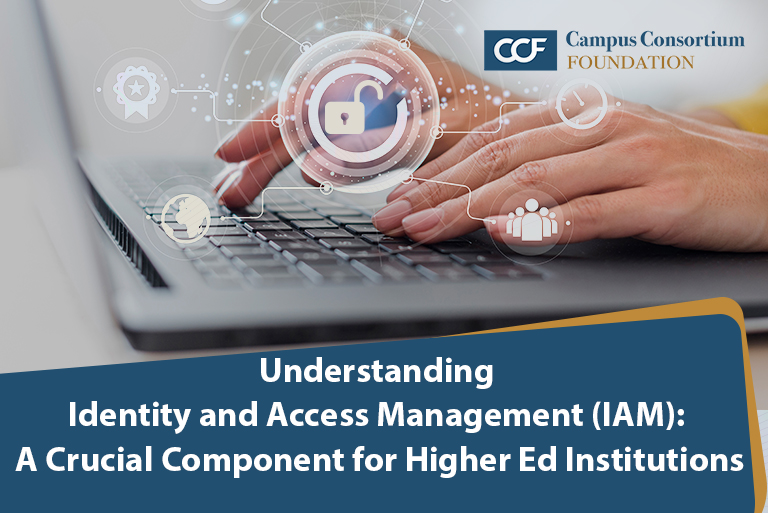In the dynamic landscape of higher education, where “digital transformation” is reshaping every aspect of campus life, the protection of sensitive resources and data is paramount. With the proliferation of online learning platforms, cloud-based services, and interconnected systems, ensuring the security and integrity of user identities and access privileges has become a pressing concern for colleges and universities worldwide. This is where IAM steps in as a critical solution to safeguard institutional assets and maintain regulatory compliance
What is IAM?
At its core, IAM is a comprehensive framework encompassing policies, technologies, and processes that enable organizations to manage and control user identities and access to resources securely. In the context of higher education, IAM encompasses a range of activities, including user authentication, authorization, provisioning, deprovisioning, and identity lifecycle management. By implementing robust IAM solutions, institutions can enforce access controls, assign appropriate permissions, and monitor user activities across various digital platforms and services.
Why is IAM important for higher education institutions?
Data Security and Privacy Protection:
Higher education institutions handle vast amounts of sensitive information, including student records, research data, and intellectual property. IAM helps mitigate the risk of data breaches by ensuring that only authorized users have access to confidential resources, thereby safeguarding the privacy and integrity of institutional data.
Regulatory Compliance:
Colleges and universities are subject to numerous regulatory requirements, such as the Family Educational Rights and Privacy Act (FERPA), the Health Insurance Portability and Accountability Act (HIPAA), and the General Data Protection Regulation (GDPR). IAM solutions facilitate compliance efforts by enforcing access controls, maintaining audit trails, and supporting data governance practices.
Efficient User Access Management:
IAM streamlines the process of managing user identities and access privileges, from onboarding new students and faculty to revoking access for departing staff members. By automating provisioning and deprovisioning workflows, institutions can reduce administrative overhead, improve operational efficiency, and enhance the user experience.
Enhanced User Productivity:
With IAM, users of higher education institutions can enjoy seamless access to a wide range of digital resources and services through a single set of credentials. Features such as Single-Sign-On (SSO) eliminate the need for multiple logins, reducing password fatigue and enhancing productivity for students, faculty, and staff.
Protection Against Insider Threats:
Insider threats, whether intentional or accidental, pose significant risks to institutional security and data integrity. IAM solutions play an integral part in mitigating these risks by implementing least privilege principles, monitoring user activities, and detecting anomalous behavior patterns that may indicate potential security incidents.
In conclusion, Identity and Access Management (IAM) serves as a cornerstone of cyber security and data governance in higher education institutions. By implementing robust IAM frameworks and solutions, colleges and universities can effectively manage user identities, control access to resources, and mitigate security risks. As higher education embraces technology-driven initiatives and digital transformation efforts, investing in IAM becomes not just a necessity but a strategic imperative for ensuring long-term success and sustainability.
For over two decades, the Campus Consortium Foundation has been committed to our mission of connecting higher education with affordable, cutting-edge technology solutions. Contact us and let’s explore how IAM solutions can drive productivity, fortify data protection, and optimize operational efficiency for your institution.




